Articles
- Page Path
- HOME > J Musculoskelet Trauma > Volume 22(2); 2009 > Article
-
Original Article
- Treatment of the Proximal Femoral Fractures with Proximal Femoral Nail Antirotation (PFNA)
- Myung-Sik Park, M.D., Young-Jin Lim, M.D., Young-Sin Kim, M.D., Kyu-Hyung Kim, M.D., Hong-Man Cho, M.D.
-
Journal of the Korean Fracture Society 2009;22(2):91-97.
DOI: https://doi.org/10.12671/jkfs.2009.22.2.91
Published online: April 30, 2009
Department of Orthopaedic Surgery, Medical School, Research Institute of Clinical Medicine, Chonbuk National University, Jeonju, Korea.
*Department of Orthopaedic Surgery, Daejeon Veterans Hospital, Daejeon, Korea.
- Address reprint requests to: Young-Jin Lim, M.D. Department of Orthopaedic Surgery, Chonbuk National University Hospital, 634-18, Guemam-dong, Deokjin-gu, Jeonju 561-712, Korea. Tel: 82-63-250-1760, Fax: 82-63-271-6538, lyj2834@naver.com
Copyright © 2009 The Korean Fracture Society. All rights reserved.
This is an Open Access article distributed under the terms of the Creative Commons Attribution Non-Commercial License (http://creativecommons.org/licenses/by-nc/3.0/) which permits unrestricted non-commercial use, distribution, and reproduction in any medium, provided the original work is properly cited.
- 794 Views
- 2 Download
- 10 Crossref
Abstract
-
Purpose
- To analyze the clinical and radiologic results of treatments in proximal femoral fracture with Proximal Femoral Nail-Antirotation (PFNA).
-
Materials and Methods
- We retrospectively reviewed the results of 21 cases of proximal femoral fracture treated with PFNA from September 2006 to October 2007 which could be followed up for minimum of more than a year. The mean age was 61.5 (20~88) years old. Male were involved in 12 cases, female in 9 cases. The mean follow up was 14.3 (12~18) months. The Garden alignment index, Cleveland index, tip apex distance were evaluated by post-operative radiologic evaluation and complications of bone union, failure of internal fixation and deformity were evaluated by follow up radiologic findings. Clinical results were assessed by social function score of Jensen and mobility score of Parker and Palmer at last follow up.
-
Results
- All fractures were united and the mean time to bone union was 15.7 (13~18) weeks. Garden alignment index showed good results of above 'good' in 15 cases (71.4%), Cleveland index showed 14 cases (66.4%) positioning in zone 5 and tip apex distance showed 17.81 (±5.65~27.52) mm in radiologic findings. The mean sliding of blade was 1.32 (0.34~2.94) mm in follow up radiologic findings and fracture of distal locking screw area was found in 1 case as a complication. Among 21 cases, the function before injury was completely recovered in 15 cases (71.4%) which were assessed by social function score of Jensen and 13 cases (61.9%) by mobility score of Parker and Palmer.
-
Conclusion
- We think that PFNA is effective osteosynthetic device for proximal femur fracture with satisfactory radiologic and clinical outcomes.
- 1. Ahn SJ, Park JH. Proximal femoral nail (PFN) for the treatment of the femoral trochanteric fracture. J Korean Fract Soc, 2004;17:7-12.Article
- 2. Bannister GC, Gibson AG, Ackroyd CE, Newman JH. The fixation and prognosis of trochanteric fractures. A randomized prospective controlled trial. Clin Orthop Relat Res, 1990;254:242-246.
- 3. Baumgaertner MR, Curtin SL, Lindskog DM, Keggi JM. The value of the tip-apex distance in predicting failure of fixation of peritrochanteric fractures of the hip. J Bone Joint Surg Am, 1995;77:1058-1064.Article
- 4. Boldin C, Seibert FJ, Fankhauser F, Peicha G, Grechenig W, Szyszkowitz R. The proximal femoral nail (PFN) - a minimal invasive treatment of unstable proximal femoral fractures: a prospective study of 55 patients with a follow-up of 15 months. Acta Orthop Scand, 2003;74:53-58.ArticlePubMed
- 5. Cleveland M, Bosworth DM, Thompson FR, Wilson HJ Jr, Ishizuka T. A ten-year analysis of intertrochanteric fractures of the femur. J Bone Joint Surg Am, 1959;41:1399-1408.ArticlePubMed
- 6. Den Hartog BD, Bartal E, Cooke F. Treatment of the unstable intertrochanteric fracture. Effect of the placement of the screw, its angle of insertion, andosteotomy. J Bone Joint Surg Am, 1991;73:726-733.ArticlePubMed
- 7. Friedl W, Colombo-Benkmann M, Dockter S, Machens HG, Mieck U. Gamma nail osteosynthesis of per- and subtrochanteric femoral fractures. 4 years experiences and their consequences for further implant development. Chirurg, 1994;65:953-963.
- 8. Han HJ, Yu HJ. The gamma nail for unstable peritrochanteric fractures. J Korean Soc Fract, 1996;9:76-80.Article
- 9. Hardy DC, Descamps PY, Krallis P, et al. Use of an intramedullary hip-screw compared with a compression hip-screw with a plate for intertrochanteric femoral fracutres. A prospective, randomized study of one hundred patients. J Bone Joint Surg Am, 1998;80:618-630.
- 10. Ito K, Hungerbühler R, Wahl D, Grass R. Improved intramedullarynail interlocking in osteoporotic bone. J Orthop Trauma, 2001;15:192-196.ArticlePubMed
- 11. Jensen JS. Determining factors for the mortality following hip fractures. Injury, 1984;15:411-414.ArticlePubMed
- 12. Lawton JO, Baker MR, Dickson RA. Femoral neck fractures-two populations. Lancet, 1983;2:70-72.ArticlePubMed
- 13. Lenich A, Mayr E, Rüter A. Hip replacement after failed internal fixation in patients with proximal femur fracture--a simple procedure? Zentralbl Chir, 2002;127:503-506.Article
- 14. Melton JL 3rd, Ilstrup DM, Riggs BL, Beckenbaugh RD. Fifty year trend in hip fracture incidence. Clin Orthop Relat Res, 1982;162:144-149.Article
- 15. Moon YW, Suh DH, Kang ST, Kwon DJ, Ji YN, Lee KB. The proximal femoral nail for intertrochantericfracture of the femur. J Korean Soc Fract, 2003;16:29-36.Article
- 16. Nuber S, Schönweiss T, Rüter A. Stabilisation of unstable trochanteric femoral fractures. Dynamic hip screw (DHS) with trochanteric stabilisation plate vs. proximal femur nail (PFN). Unfallchirurg, 2003;106:39-47.PubMed
- 17. Parker MJ, Palmer CR. A new mobility score for predicting mortality after hip fracture. J Bone Joint Surg Br, 1993;75:797-798.ArticlePubMedPDF
- 18. Sommers MB, Roth C, Hall H, et al. A laboratory model toevaluate cutout resistance of implants for pertrochanteric fracture fixation. J Orthop Trauma, 2004;18:361-368.ArticlePubMed
- 19. Strauss E, Frank J, Lee J, Kummer FJ, Tejwani N. Helical blade versus sliding hip screw for treatment ofunstable intertrochanteric hip fractures: a biomechanical evaluation. Injury, 2006;37:984-989.ArticlePubMed
- 20. Whitelaw GP, Segal D, Sanzone CF, Ober NS, Hadley N. Unstable intertrochanteric/subtrochantericfractures of the femur. Clin Orthop Relat Res, 1990;252:238-245.Article
- 21. Lenich A, Mayr E, Rüter A, Möckl Ch, Füchtmeier B. First results with the Trochanter Fixation Nail (TFN): a report on 120 case. Arch Orthop Trauma Surg, 2006;126:706-712.ArticlePubMedPDF
REFERENCES
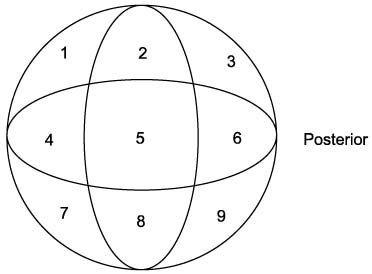
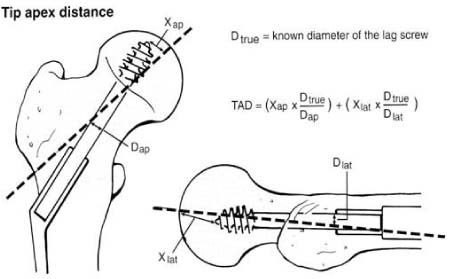
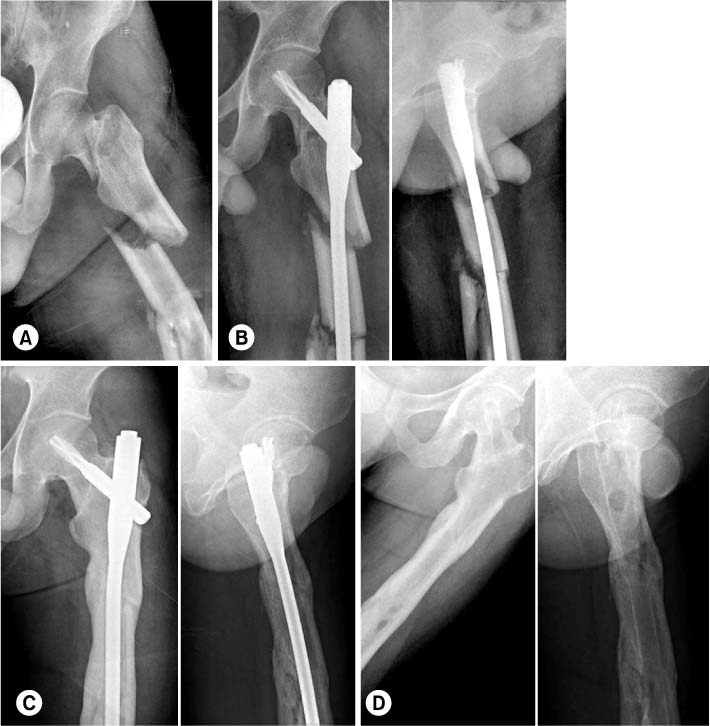
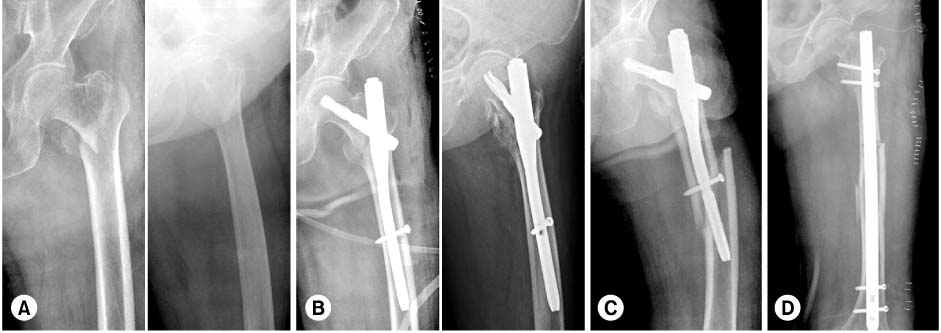
Figure & Data
REFERENCES
Citations

- Clinical and radiological outcome of the Chimaera short nailing system in inter- and subtrochanteric fractures
Aurélien Traverso, Trieu-Hoai-Nam Ngo, Guillem Fernandez Gil, Xavier Lannes, Sylvain Steinmetz, Kevin Moerenhout
Injury.2023; 54(3): 970. CrossRef - Comparative Study of Intertrochanteric Fracture Treated with the Proximal Femoral Nail Anti-Rotation and the Third Generation of Gamma Nail
Jae-Cheon Sim, Tae-Ho Kim, Ki-Do Hong, Sung-Sik Ha, Jong-Seong Lee
Journal of the Korean Fracture Society.2013; 26(1): 37. CrossRef - The Treatment of Intertrochanteric Femoral Fracture with Proximal Femoral Nail Antirotation
Jong Won Kim, Hyun Soo Park, Young Soo Jang, Jae Hyuk Choi, Sung Ju Bae, Chan Il Bae
Journal of the Korean Fracture Society.2012; 25(4): 257. CrossRef - Cementless Bipolar Hemiarthroplasty Using a Rectangular Cross-section Stem for Type A2 or above Intertrochanteric Fractures
Bong-Ju Park, Hong-Man Cho, Cheol Park, Hwang-Se Bong
Hip & Pelvis.2012; 24(3): 222. CrossRef - Hip Arthroplasty for Failed Internal Fixation of Intertrochanteric Fractures
Ju-Oh Kim, Hong-Man Cho, Cheol Park, Ju-Hyun Sim
Hip & Pelvis.2012; 24(2): 94. CrossRef - Anatomical Measurement of Normal Korean Proximal Femur Using Plain Radiography: A Problem when using Proximal Femoral Nail Anti-rotation
Jong-Seok Park, Woo-Jong Kim, Jae-Wan Soh, Byung-Woong Jang, Tae-Heon Kim, You-Sung Suh
Hip & Pelvis.2011; 23(4): 303. CrossRef - The PFNA Nail for Pertrochanteric Fracture of the Femur without Fracture Table
Jeoung Ho Kim, Sang Hong Lee, Kwang Chul Lee, Sung Won Cho
Journal of the Korean Fracture Society.2011; 24(3): 217. CrossRef - PFNA and PFN in Intertrochanteric Fractures - Comparison Study of Sliding -
Suk Kyu Choo, Hyoung Keun Oh, Jun Young Choi
Hip & Pelvis.2010; 22(1): 79. CrossRef - Proximal Femoral Nail Antirotation versus Compression Hip Screw with Trochanter Stabilizing Plate for Unstable Intertrochanteric Hip Fractures
Jae-Young Rho, Sang-Bum Kim, Youn-Moo Heo, Seong-Jin Cho, Dong-Sik Chae, Woo-Suk Lee
Journal of the Korean Fracture Society.2010; 23(2): 161. CrossRef - Treatment of the Unstable Intertrochanteric Fracture with Proximal Femoral Nail Antirotation: Comparison with Compression Hip Screw with Trochanteric Stabilizing Plate
Tae-Ho Kim, Jong-Oh Kim, Seung-Yup Lee, Geon-Ung Yun
Journal of the Korean Fracture Society.2010; 23(4): 353. CrossRef




Fig. 1
Fig. 2
Fig. 3
Fig. 4
Patient data profile
*Inter: Intertrochanter femur fracture, †A: AO/ASIF classification, ‡Sub: Subtrochanter femur fracture, §S: Seinshiemer classification, ∥TAD: Tip apex distance.
Garden alignment Index
The Assessment of Social Function of Jensen
The Assessment of Mobility Score of Parker and Palmer
*Inter: Intertrochanter femur fracture, †A: AO/ASIF classification, ‡Sub: Subtrochanter femur fracture, §S: Seinshiemer classification, ∥TAD: Tip apex distance.

 E-submission
E-submission KOTA
KOTA TOTA
TOTA TOTS
TOTS
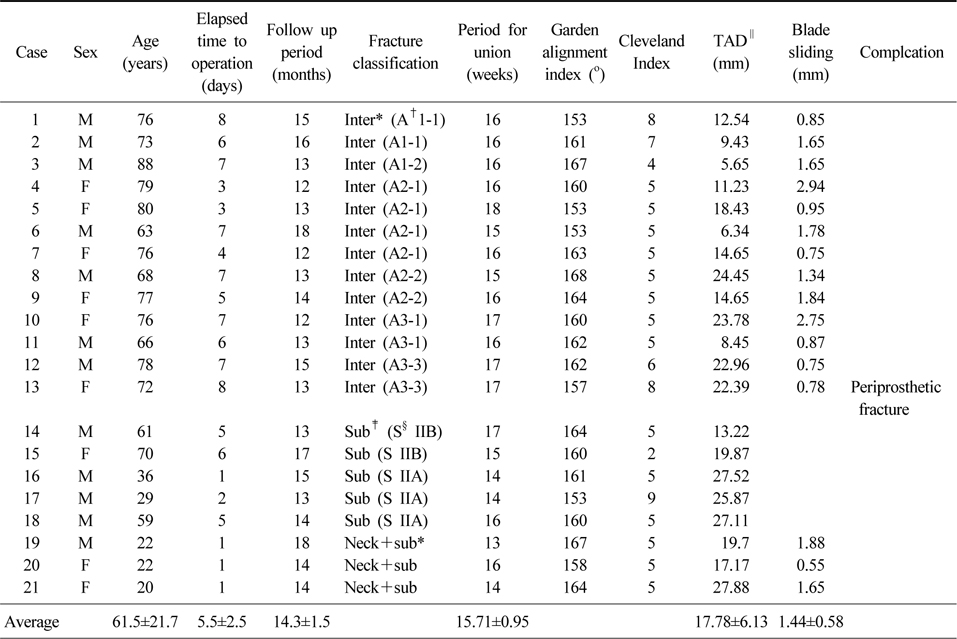

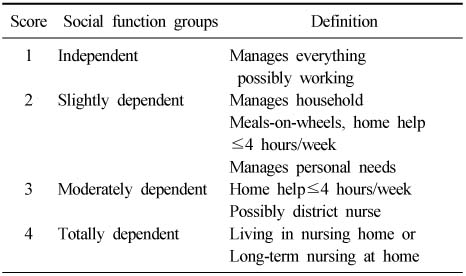

 Cite
Cite

